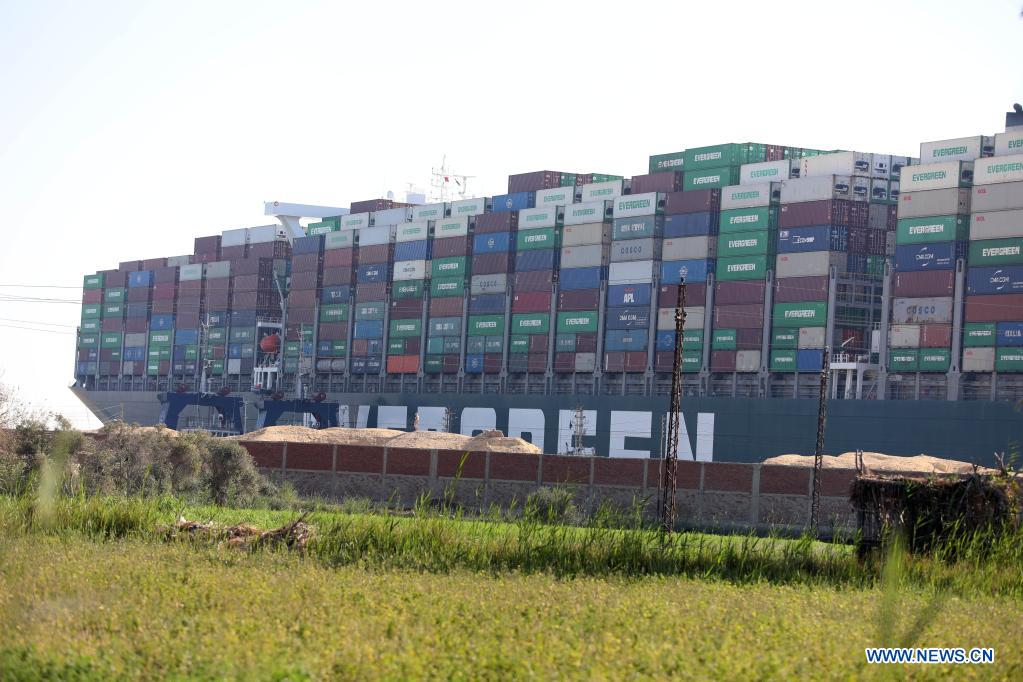Suez Canal jam: How supply chains can be resilient in wake of crises
- By Tom Fowdy
 0 Comment(s)
0 Comment(s) Print
Print E-mail China.org.cn, April 1, 2021
E-mail China.org.cn, April 1, 2021

The world watched with interest and concern as a massive container ship, the Ever Given, obstructed the Suez Canal waterway for nearly a week. Although brief, the crucial importance of the route was laid bare as the predicament caused a nightmare for global shipping, shutting down the main route between the Mediterranean and Red Seas and thus the main link between Europe, Africa and Asia. Many ships were forced to navigate southwest around the long and distant Cape of Good Hope, compiling additional running costs which were estimated to run into the billions. Whilst the situation was resolved, the potential blockade of such a route reminded the world of the importance of diversifying global supply routes.
In trying to understand trade and commerce, geography matters. The question of "who will buy your goods" is contingent upon the bigger dilemma as to how will they get your goods as this ultimately decides how much goods will cost. Speed, efficiency and convenience all matter. What use is it to buy goods manufactured in remote locations, that have no easy means of getting to you, and require an additional $70 or so in shipping costs? As a result, infrastructure matters precisely because it connects faraway places together and creates accessibility, which decreases costs and increases the convenience.
This has been the magic of the Suez Canal. How do goods transit from East Asia to Europe? Long ago the giant landmass of Africa sat between the two continents and the barren desert in the northern part of the continent was not conducive for easily-accessible trade routes. This meant that ships had to take a long and uncertain route around it. The creation of the Suez Canal in the 19th century, however, was a gamechanger that allowed ships to go "through" the continent and immediately reach the European continent. It transformed global shipping and commerce. This allowed Asia to trade with Europe more readily, and allowed places such as southern India to break out of economic isolation and attain strategic importance.
As a result, the crisis in the Suez Canal showcased a significant vulnerability in global supply chains by undermining transcontinental shipping. Worse still, it comes amid the broader context of the COVID-19 pandemic also having complicated supply chain vulnerabilities, posing new challenges as to how supply chains can remain resilient in wake of such crises. As a result, it is no surprise that there has been an increasing emphasis around the world on finding "alternative" options which are safer and more effective. The events in Egypt merely add to this.
In this regard, the Belt and Road initiative could be one of the potential alternatives because it is about building infrastructure which connects geographic regions in new ways and subsequently develops new potential for prosperity. The creation of new railway routes between China and Europe has played a key role in upholding supply chain resilience, both during the pandemic and throughout the Suez blockade, with the establishment of a non-stop freight line which allows goods to be shipped from as far east as Shanghai to as far west as London and Lisbon, or alternatively through central Asia and Turkey. The railways have transformed the landmass of the continent from an obstacle into an opportunity, integrating it closer together. The railways significantly reduce the journey time of cargo and are far more cost effective. As shipping ran into problems due to the COVID-19 pandemic, the railways subsequently boomed to unprecedented highs in 2020 due to a soaring demand for medical supplies and equipment. This has helped quash vulnerabilities in global trade over the past year, and is serving to connect multiple regions throughout the world.
The single reliance upon a sole route can easily create trouble when it is disrupted. Therefore, it is important to find other alternatives and help secure global supply chain resilience.
Tom Fowdy is a British political and international relations analyst and a graduate of Durham and Oxford universities. He writes on topics pertaining to China, the DPRK, Britain and the U.S. For more information please visit:
http://www.china.org.cn/opinion/TomFowdy.htm
Opinion articles reflect the views of their authors, not necessarily those of China.org.cn.
If you would like to contribute, please contact us at opinion@china.org.cn.






Go to Forum >>0 Comment(s)